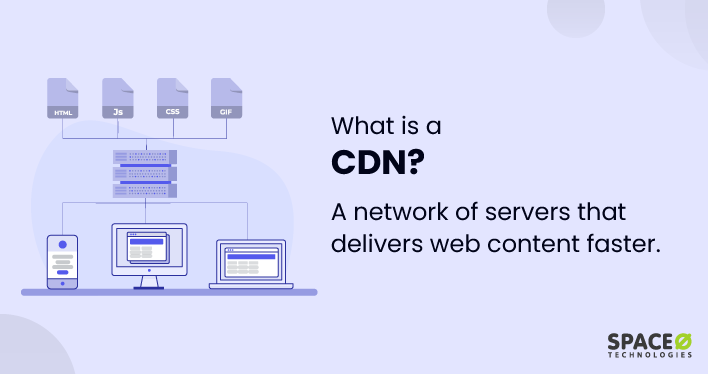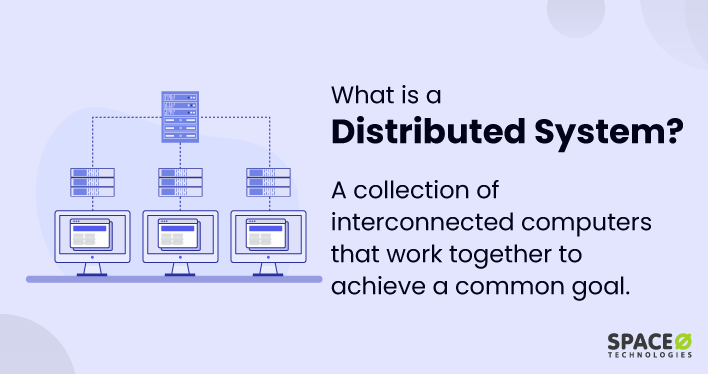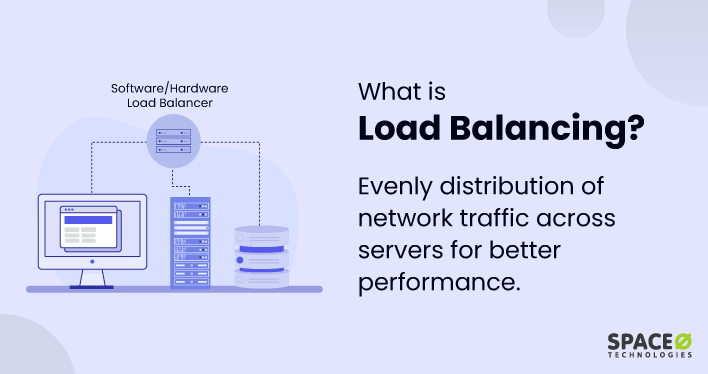Table of Contents
What is a CDN (Content Delivery Network)?
A Content Delivery Network (CDN) is a globally distributed network of servers designed to quickly deliver content, such as web pages and software updates to end users. By caching and serving content from strategically located servers, CDNs reduce latency, improve user experience, and ensure content availability during high-traffic periods or web server failures.
CDNs are an essential component of web application architecture, providing efficient content delivery, improved performance, and enhanced user experience. If you want to know in detail about web app architecture, check this complete guide about various components of web application architecture.
5 Key Components of a Content Delivery Network
In web application architecture, CDNs play a crucial role by ensuring efficient dynamic and static content delivery to end-users. To achieve this, Content Delivery Networks (CDNs) consist of key components that work together seamlessly. These components include:
- Edge servers: Edge servers are distributed across multiple data centers around the world, providing wide geographic coverage. These servers cache and serve content to users, ensuring low latency and deliver web content quickly.
- Origin server: The origin server is the primary server where the original content is hosted. When content is not available on edge servers, CDNs retrieve the content from the origin servers and then cache it on the edge servers for future requests.
- DNS resolver: The DNS resolver is responsible for directing user requests to the most appropriate edge server based on factors such as geographical proximity, server load, and network conditions. It ensures that content is delivered from the closest and most efficient edge server to the user.
- Caching mechanism: The caching mechanism powered by caching servers is a crucial component of a CDN, as it determines which cached content is stored on edge servers and for how long. Proper caching policies can significantly improve content delivery speed and reduce the load on the origin server.
- Load balancing: Load balancing distributes incoming user requests across multiple edge servers to prevent any single server from becoming overloaded. This helps maintain the overall website performance and stability of the CDN servers. Want to know more in detail about load testing? Here is a definition of load balancing.
5 Key Benefits of Using a Content Delivery Network
CDNs offer 5 core benefits for both content providers and end-users. Here are the 5 benefits stated below.
- By serving content from edge servers located closer to the end user, CDNs reduce latency and provide faster response times.
- Faster website load times and reduced latency lead to a better overall user experience. This results in increased user engagement, lower bounce rates, and higher conversion rates.
- CDNs handle sudden spikes in web traffic, ensuring dynamic content availability and performance even during high-traffic periods.
- CDNs provide additional layers of data security, such as DDoS protection, by distributing traffic across multiple servers and filtering out malicious requests.
- By offloading traffic from the origin server to edge servers, CDNs help reduce bandwidth consumption costs and infrastructure expenses.
4 Common Use-cases of Content Delivery Network
CDNs can be used in a variety of applications and industries. Some common use cases include:
- Media and entertainment: CDNs are widely used by media companies and streaming platforms to deliver high-quality video and audio content to users worldwide with minimal buffering and latency.
- eCommerce: Online retailers use CDNs to ensure fast and reliable access to their websites, product images, and other assets, providing a smooth shopping experience for customers.
- Gaming: Gaming companies use CDNs to distribute game updates, patches, and downloadable content (DLC) to players around the world quickly and efficiently.
- Software distribution: CDNs are used by software companies to deliver updates and installation files to users, ensuring timely access to the latest versions and features.
How to Choose the Right CDN for Your Business
Selecting the right CDN for your needs involves considering several factors, such as:
- Geographic coverage: Ensure the CDN has a sufficient number of edge servers in the regions where your users are located.
- Performance: Evaluate the CDN’s performance, including latency, throughput, and cache hit ratio, to ensure it meets your requirements.
- Security features: Assess the CDN’s security capabilities, such as DDoS protection, SSL support, and content protection mechanisms.
- Pricing: Compare pricing models and costs among various CDNs to find the one that aligns with your budget and usage patterns.
- Integration and support: Consider the ease of integration with your existing infrastructure and the level of customer support provided by the CDN provider.
CDNs play a vital role in delivering web content efficiently and quickly to users worldwide, enhancing user experience, and supporting various industries. By understanding the key components, benefits, and use cases of CDNs, you can choose the right CDN for your needs and boost your online presence.






